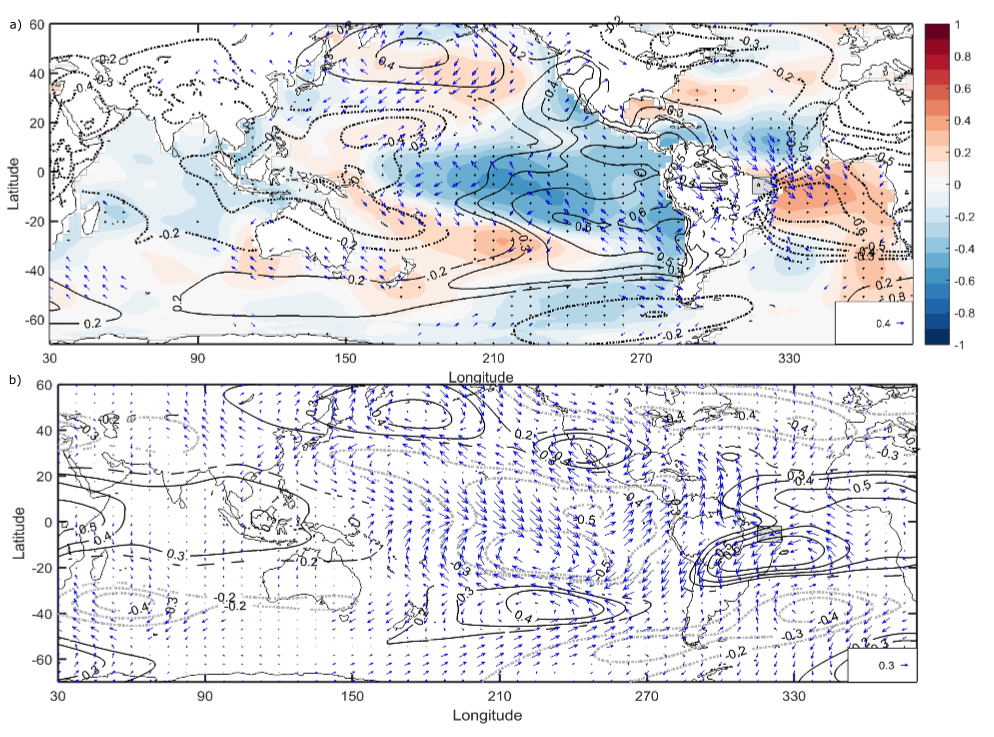Research Projects
- Home
- Research Projects
Study of the interannual and decadal rainfall variability in tropical South America over the last century
- - We investigate the relationship of known Sea Surface Temperature (SST) modes of variability and precipitation patterns over Northeastern Brazil (NEB) at interannual and decadal timescales.
- - We use output simulations from the atmospheric model LMDZ forced with observed SST spanning from 1854 to 2000. This model accurately captures precipitation variability in NEB, as confirmed through comparisons with available precipitation datasets.
- - At interannual timescales, El Nino Southern Oscillation (ENSO) and the Atlantic Meridional Mode (AMM) are the the primary modes linked to precipitation anomalies in NEB. During the negative phase of ENSO, an intensified zonal SST gradient over the equatorial Pacific enhances the Walker circulation, leading to increased subsidence over the eastern Pacific and convergence over the tropical Atlantic. During a negative phase of AMM, warmer SST anomalies in the southern tropical Atlantic drive cross-equatorial winds, resulting in a southward shift of the Atlantic Intertropical Convergence Zone (ITCZ).
- - On decadal timescales, positive rainfall anomalies in NEB are associated with the negative phase of the Interdecadal Pacific Oscillation (IPO). In contrast, the Atlantic Multidecadal Oscillation (AMO) does not does not exhibit a comparable influence on NEB rainfall, as related SST anomalies remain confined to the tropical region.
- - Our findings also show that the Pacific and Atlantic influences on NEB rainfall are not independent. These modes are coupled trough a remote Gill-type response, driven by the Pacific dynamics, which reinforces the impact of the AMM-pattern through an enhanced cross-equatorial SST gradient.

